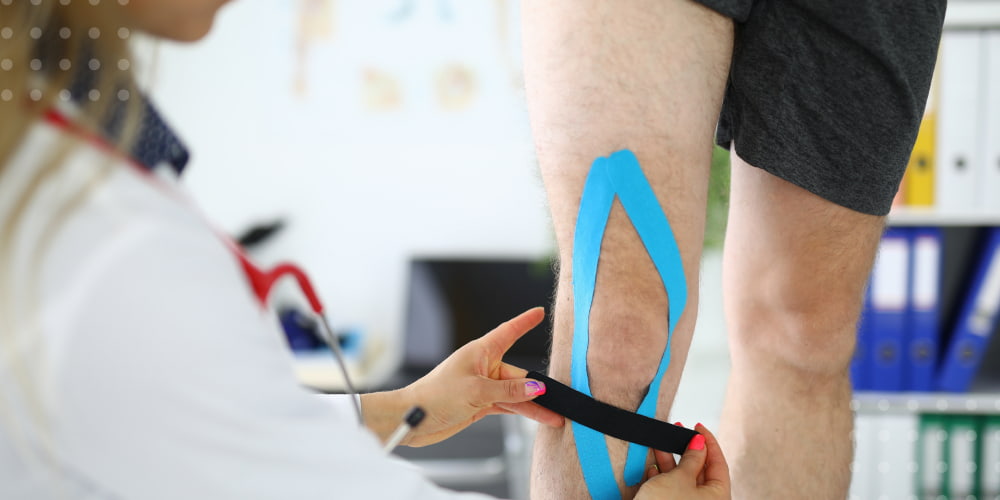Major trauma is a violation of the physiological structure of tissues as a result of the action of external factors, physical, mechanical, or chemical.
Joint injury is a defect with a high risk of disability. Without proper treatment and rehabilitation, the patient should think about the irreversible consequences. Bone and, especially, cartilage tissue have a low degree of regeneration. And people of age will not be able to get complete healing and recovery without medical assistance.
Major trauma directly affects the quality of life and further comfort in self-care and everyday life. That is why, to fully restore our joints after injuries, timely competent admitted rehabilitation is necessary.
Joint problems are not subject to time, age or lifestyle. They are found in young people, adults, and the elderly, both professional athletes and people who rarely play sports.
More often, in youth, these injuries are associated with sports, hard work, an accident of heredity. At a more mature age, major trauma is manifested as a consequence:
- sedentary lifestyle
- degenerative changes in the tissues of the joints and periarticular tissues, which occur during physical inactivity
- obesity and the increased risks associated with it will be injured.
In old age, all the injuries and microtraumas received throughout their life make themselves felt. Degenerative processes are only accelerating, and immunity resources are no longer enough to recover, to stop the course of the disease.
No one can be sure that they will be spared the risk of injury to the joint. And joints need to be immediately treated when you feel discomfort, every orthopedist and rehabilitation service will tell you.
The most common injuries that patients come to us with at admitted rehabilitation are:
- shoulder injury
- elbow joint
- wrist and hand
- hip joint
- knee joint
- ankle and feet.
Treatment of joint injuries
Treatment and admitted rehabilitation of the joints must be carried out as soon as possible. In the future, this will help to avoid complications. But, first, you need to consult a doctor and make a diagnosis of the injured joint.
After the injury, the rehabilitation service treats the joint in 3 stages:
- The immobilization period lasts from plaster to the fusion of the capsule, bone, or ligaments. The first stage of treatment aims to increase blood circulation and lymph circulation at the injury site and around it, which will help remove edema and accelerate metabolism quickly. Next, physiotherapy methods are used: UHF, low-intensity magnetotherapy, and laser.
When carrying out arthroscopy of the joints, the rehabilitation process begins from the second functional stage. The advantages of using this method include its minimal damage to the periarticular tissues and its more accurate representation of the surgical intervention thanks to the arthroscope of a special small-diameter chamber. These advantages allow you to shorten the entire rehabilitation period significantly.
Improved nutrition of tissues located near the affected area stimulates the fastest restoration of bone integrity and regeneration of the joints, muscles, and soft tissues located in and near the injury site. It is essential to prevent the formation of ankylosis, joint stiffness, or joint muscle atrophy. This task is entrusted to the rehabilitation service, which closely monitors the rehabilitation process.
Also, after immobilizing the joint, almost immediately after the inflammation subsides, individual kinesiotherapy techniques can be used. First, the patient does exercises in the healthy joint of the opposite limb and the surviving joints of the affected limb. They are followed by static exercises in a healthy, and later in a damaged limb.
In addition, the patient mentally recreates movement in the damaged joint to improve the ideomotor response. The entire rehabilitation program is selected individually for each patient. But the sooner the injured patient begins to practice movements in the joint, the better for its recovery.
- The functional period lasts from removing the cast to the moment of restoration of the joint function. The main thing in this period is to continue rehabilitation with the help of the patient’s movements at the previous stage and gradually complicate them. Add to the training program special exercises for recovery, nutrition, and strengthening of the damaged muscles.
The patient performs specific tasks at this stage to develop the sore joint with relief and later with full force. As a result of their efforts, joint mobility and muscle strength increase. Also, doctors use physiotherapy procedures (ultrasound, electrotherapy, laser therapy, magnetotherapy, etc.) and massage to increase the effect. And the number and duration of classes are getting bigger.
- The training period is called so because the basic functions of the joint have already been restored, and it is necessary to increase muscle strength and some functions of the joint, which have not fully recovered in the previous 2 periods of treatment. Therefore, the main goal of the training period will be to restore your physical form, which was before the injury, and significantly increase it.
Admitted rehabilitation after severe joint injury
Rehabilitation after trauma is a set of measures to restore the integrity of muscle, nerve, connective, and other tissues. And you cannot go to the next stage without completing the current one.
The rehabilitation service applies an individual approach to each patient. As a result, each person has a different ratio of tissue density, regenerative capabilities, the strength of immunity, the nervous system, and mental processes are restored at different rates.
If you are faced with a problem that restricts your movement, take it seriously; this can be caused by damage to the musculoskeletal system or individual joint injuries that affect the functionality of your body. Major trauma entails a change in the work of body systems:
- respiratory
- cardiovascular
- central nervous system
- endocrine glands
- gastrointestinal tract and excretory organs.
Timely comprehensive physical rehabilitation contributes to:
- a quick return to a fulfilling life
- better and efficient restoration of the lost joint function
- restoration of household functions
- improving the physical tone of the body
- prevention of re-injury.
Treatment methods used by the rehabilitation service:
- decompression therapy
- mechanotherapy
- shock wave therapy
- physiotherapy (ultrasound, electrotherapy, laser therapy, UHF therapy, inductothermy, magnetotherapy
- high-intensity laser therapy
- kinesiotherapy Neurac
- massage, pressotherapy
- biological methods
- Angel Arthrex PRP Therapy (High Platelet Plasma Treatment)
- ACP therapy (low platelet plasma treatment)
- BMC therapy (treatment with bone marrow stem cell concentrate)
- injections of hyaluronic acid under ultrasound control
- kinesio taping
Neurac therapy has established itself as the most effective method of kinesiotherapy. The world’s best rehabilitation services use this Norwegian methodology. It is actively used in the rehabilitation of professional athletes.
Rehabilitation programs are drawn up individually for each patient jointly by an orthopedist and a rehabilitation therapist, taking into account all the disease factors- no group lessons, only individual and detailed work of the therapist and the patient.












Please, leave your review
Write a comment: